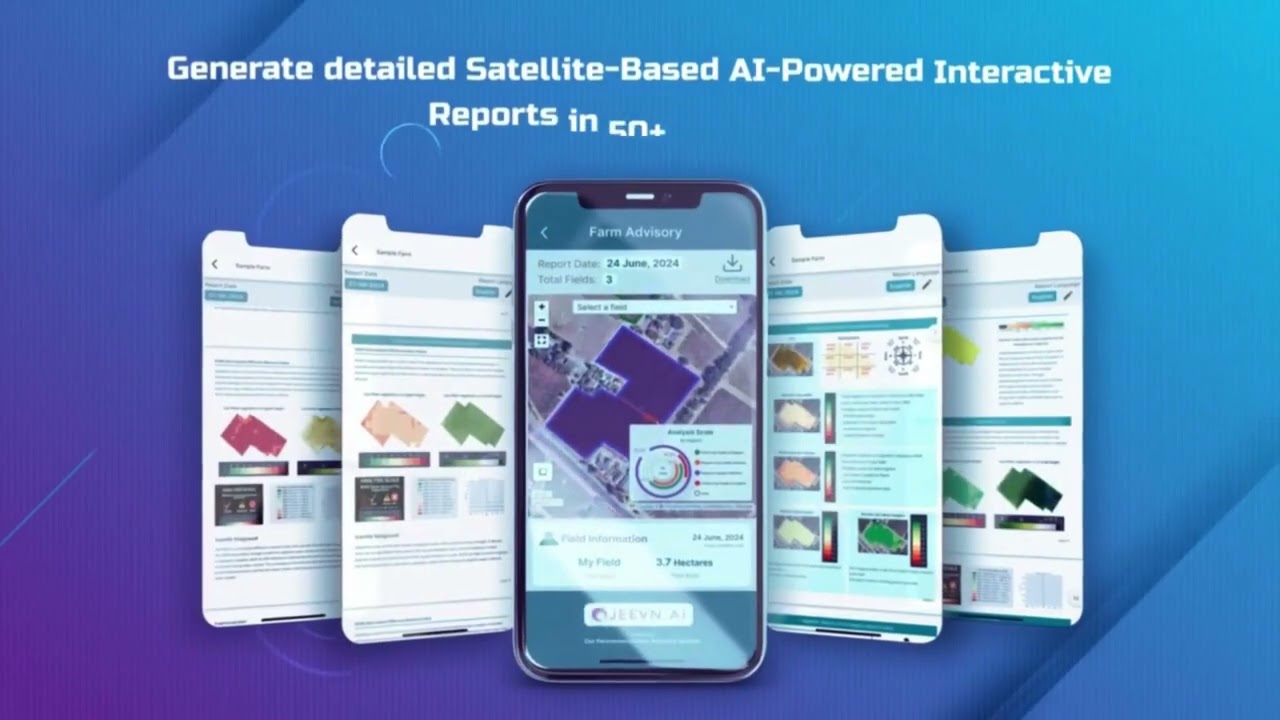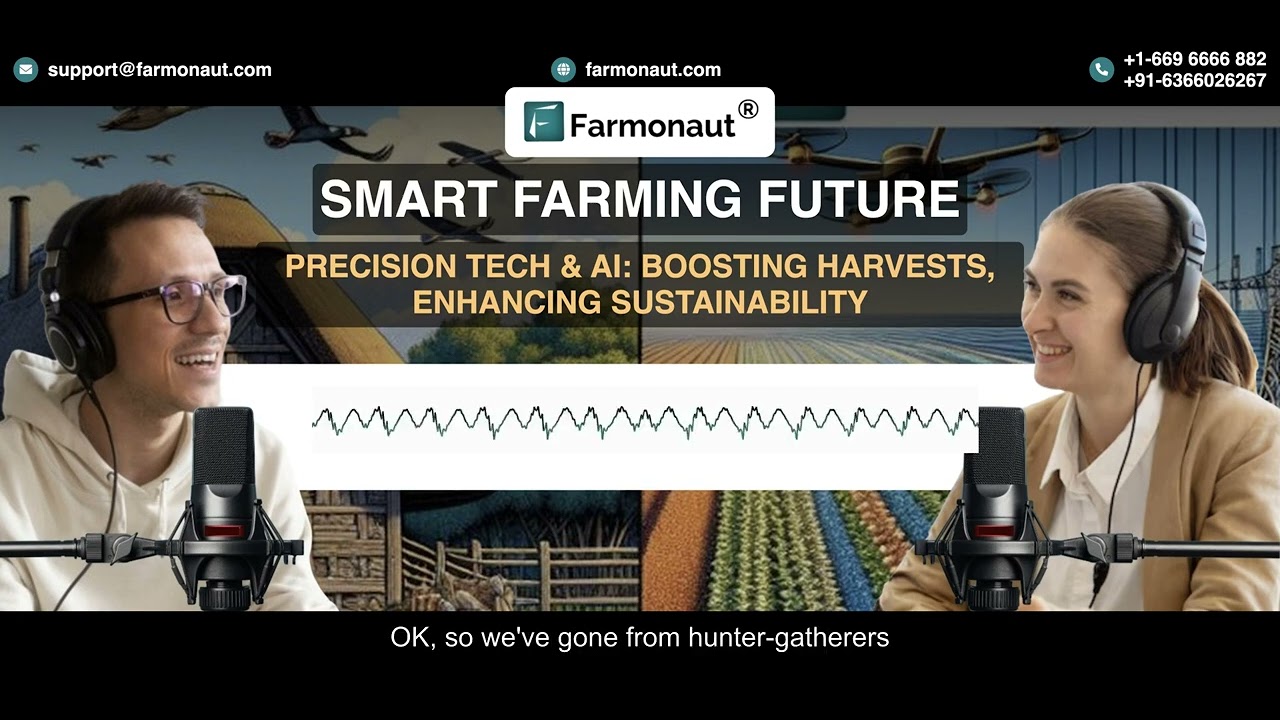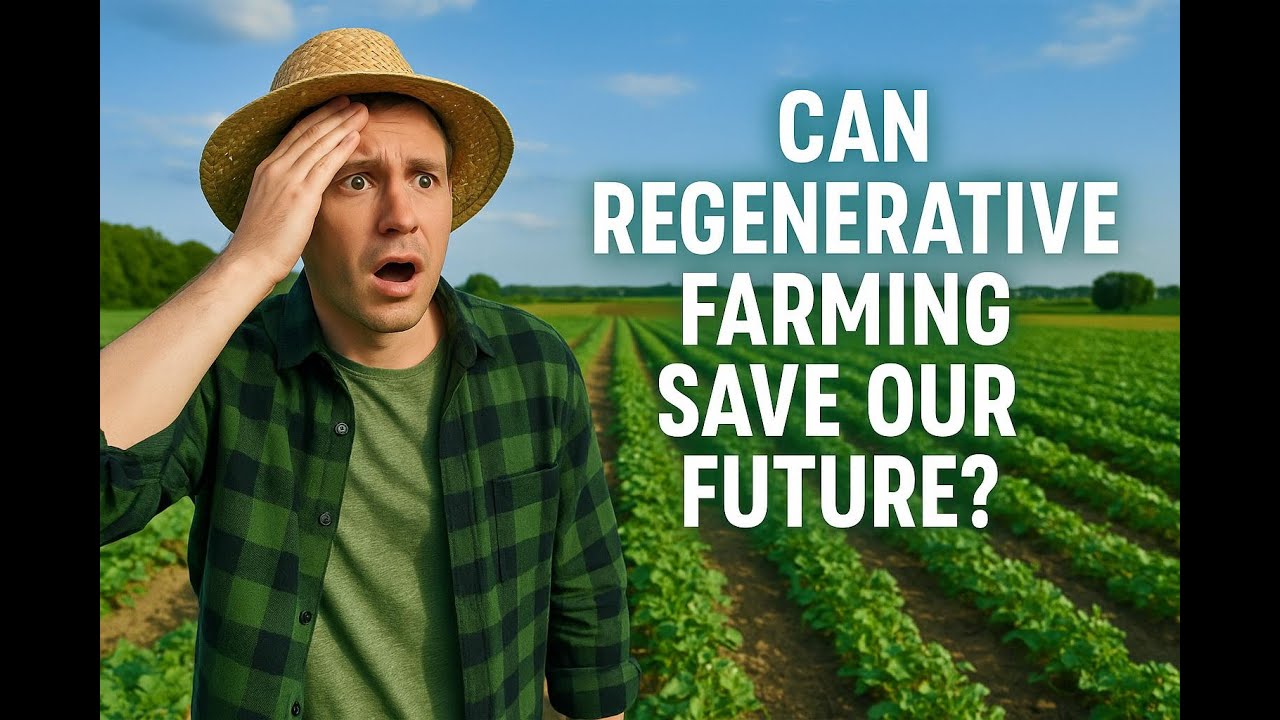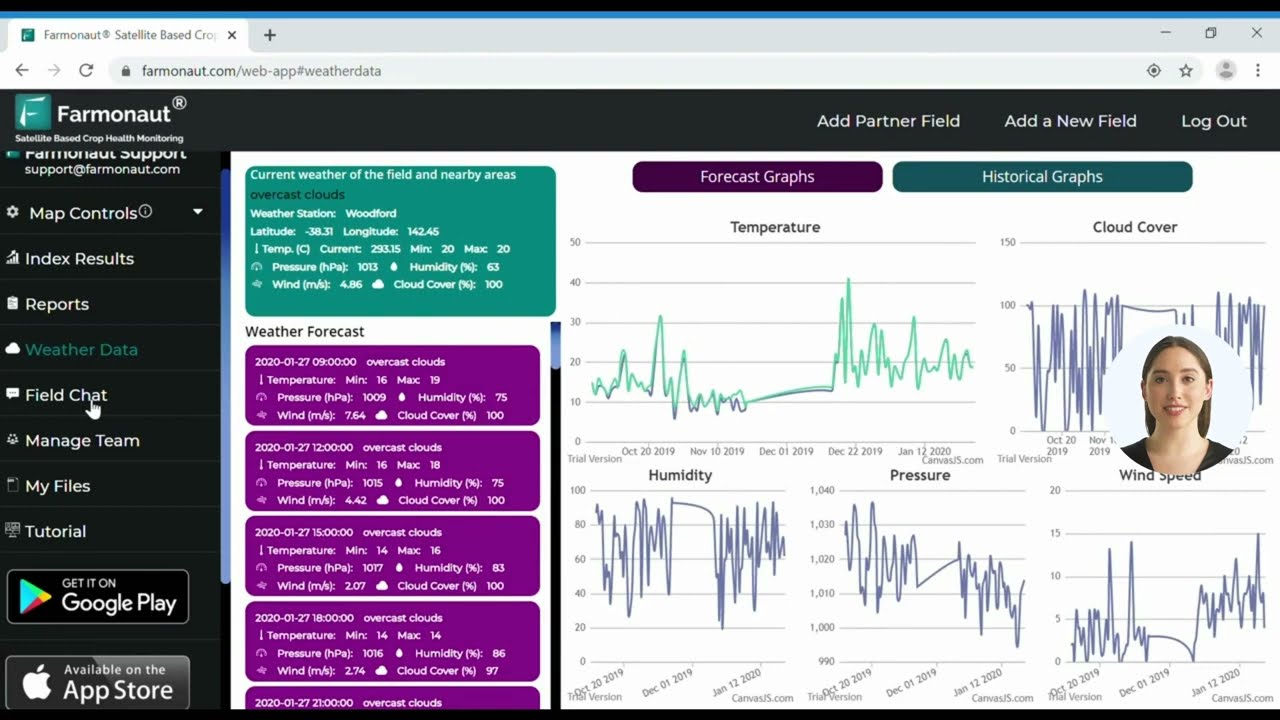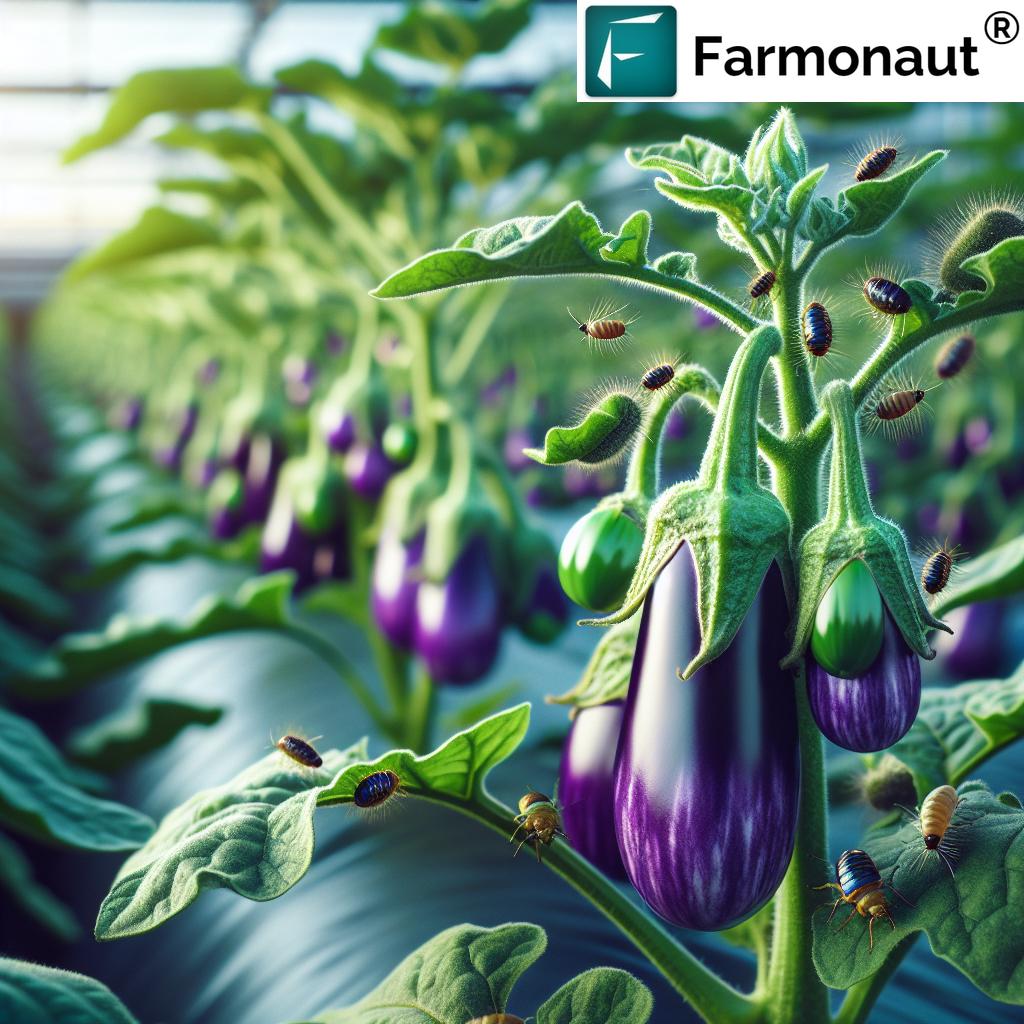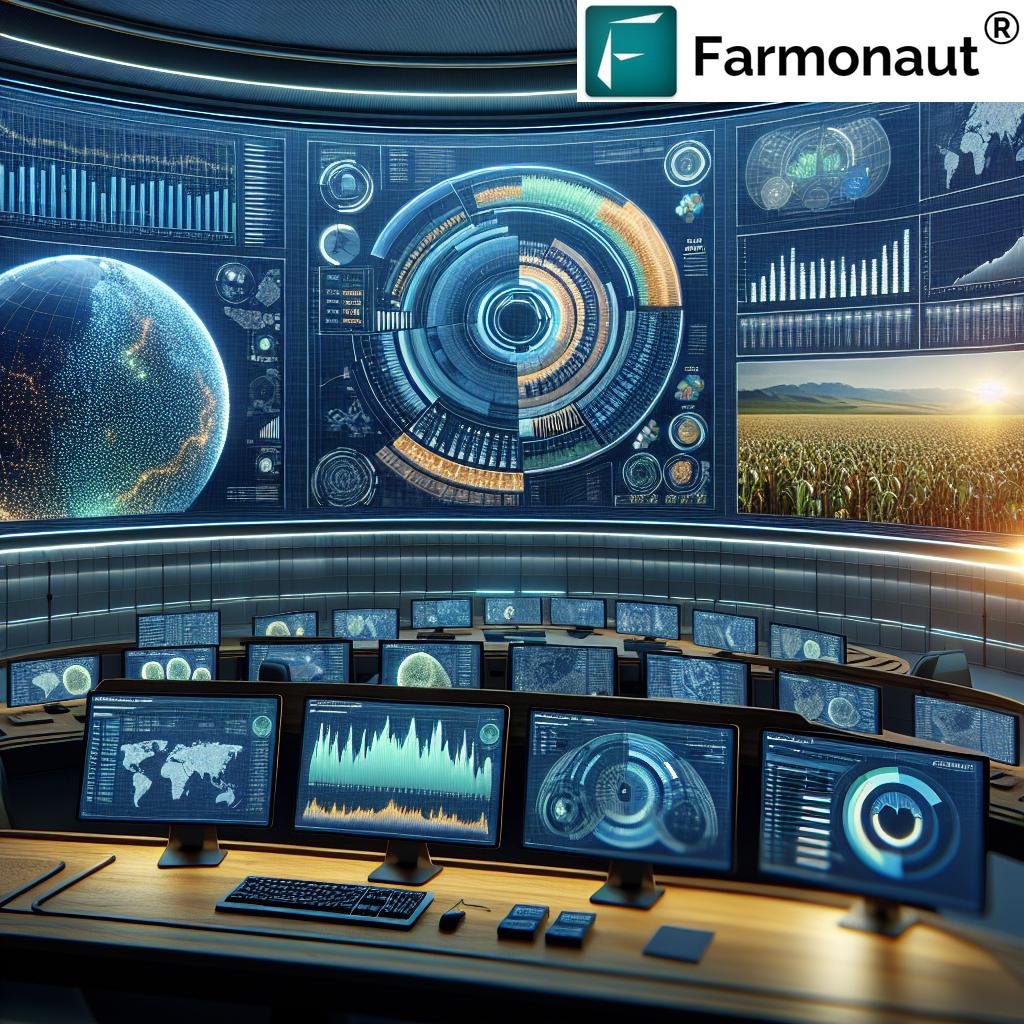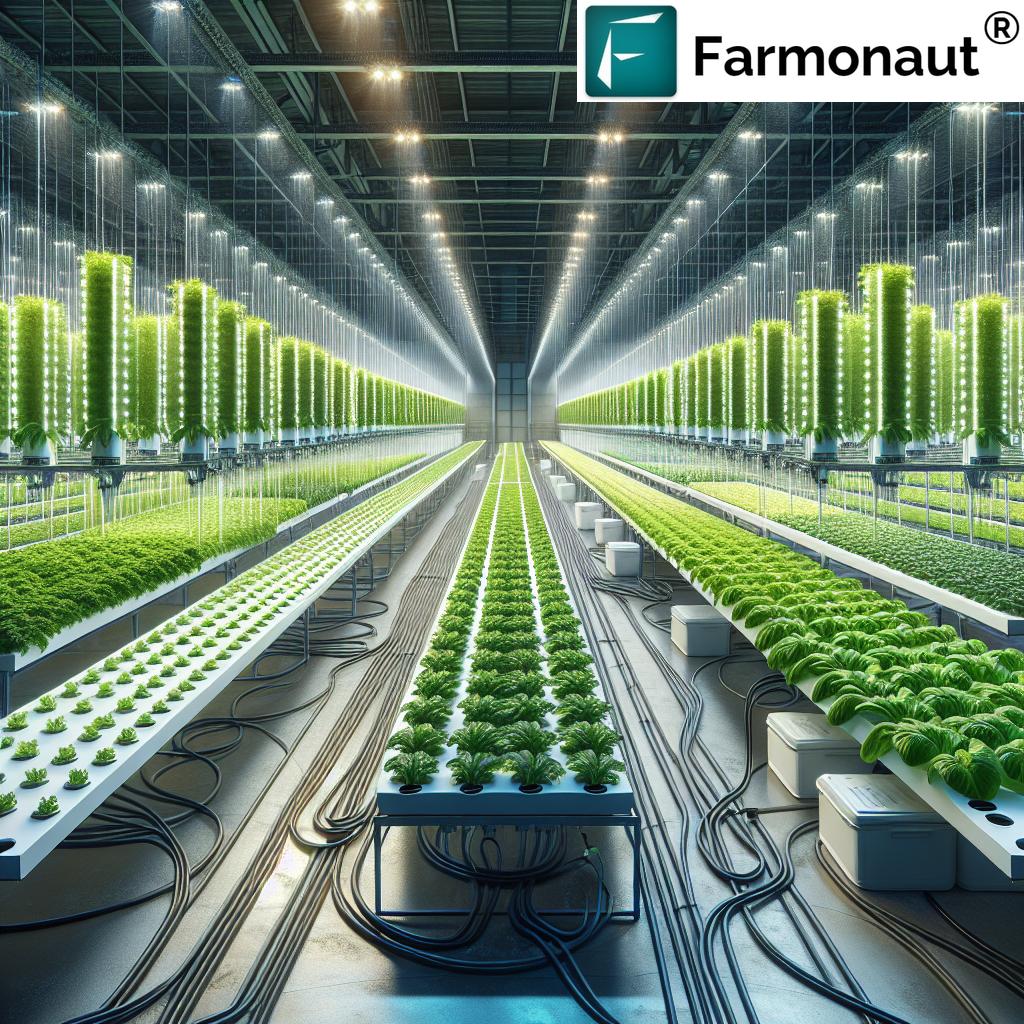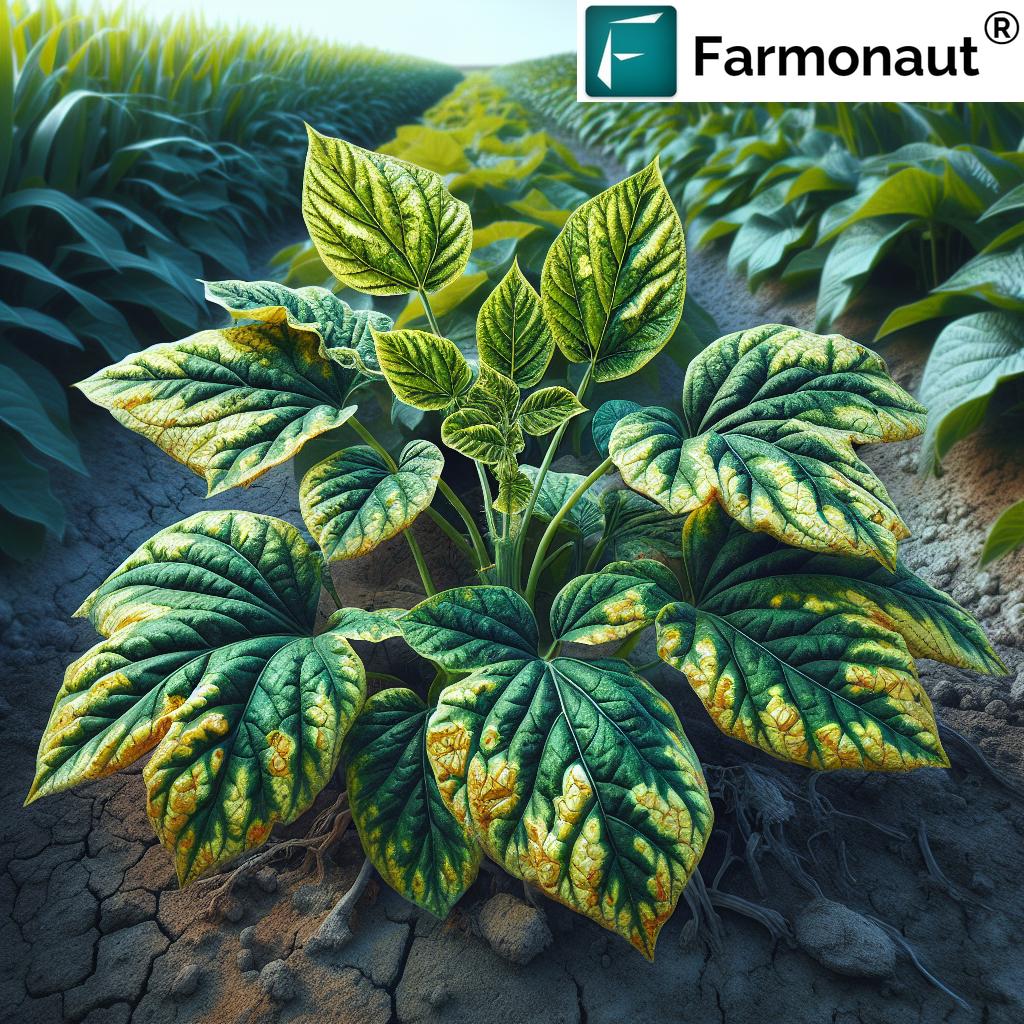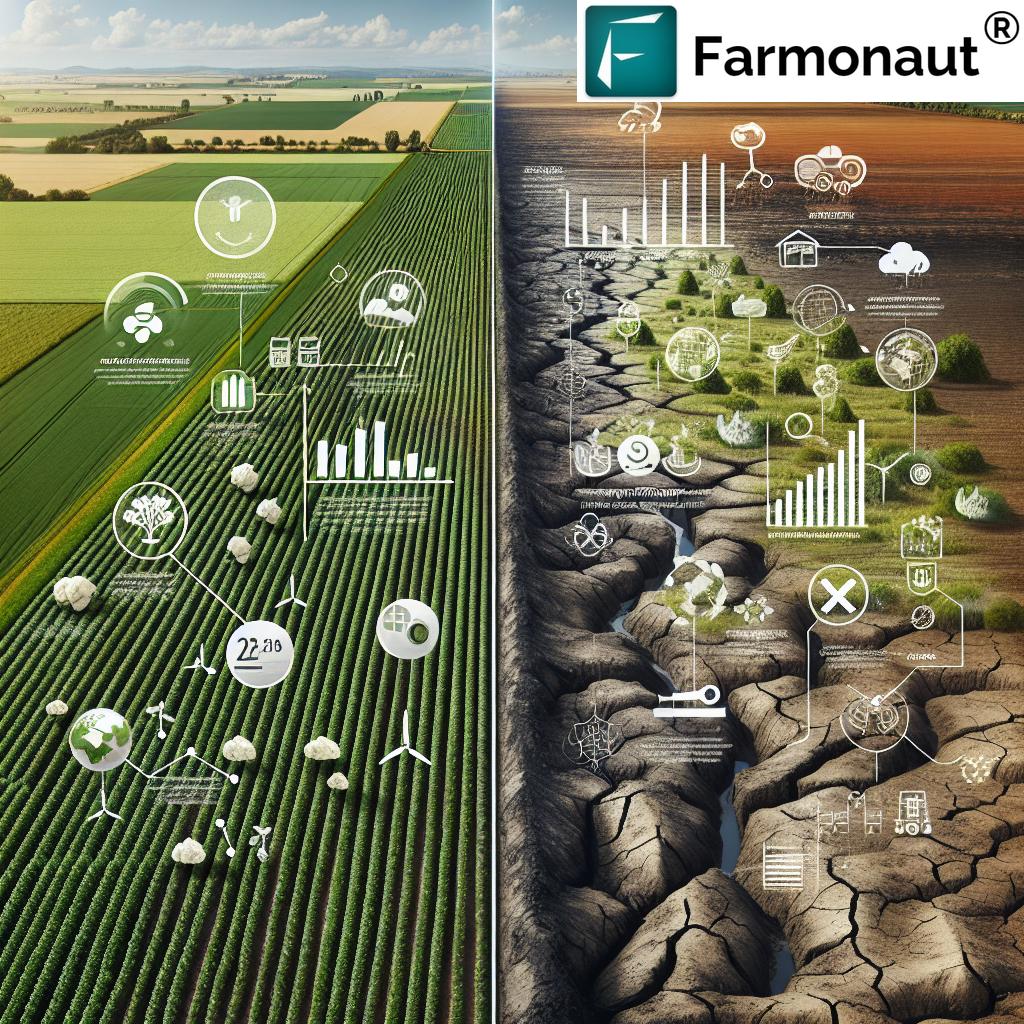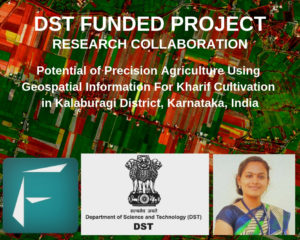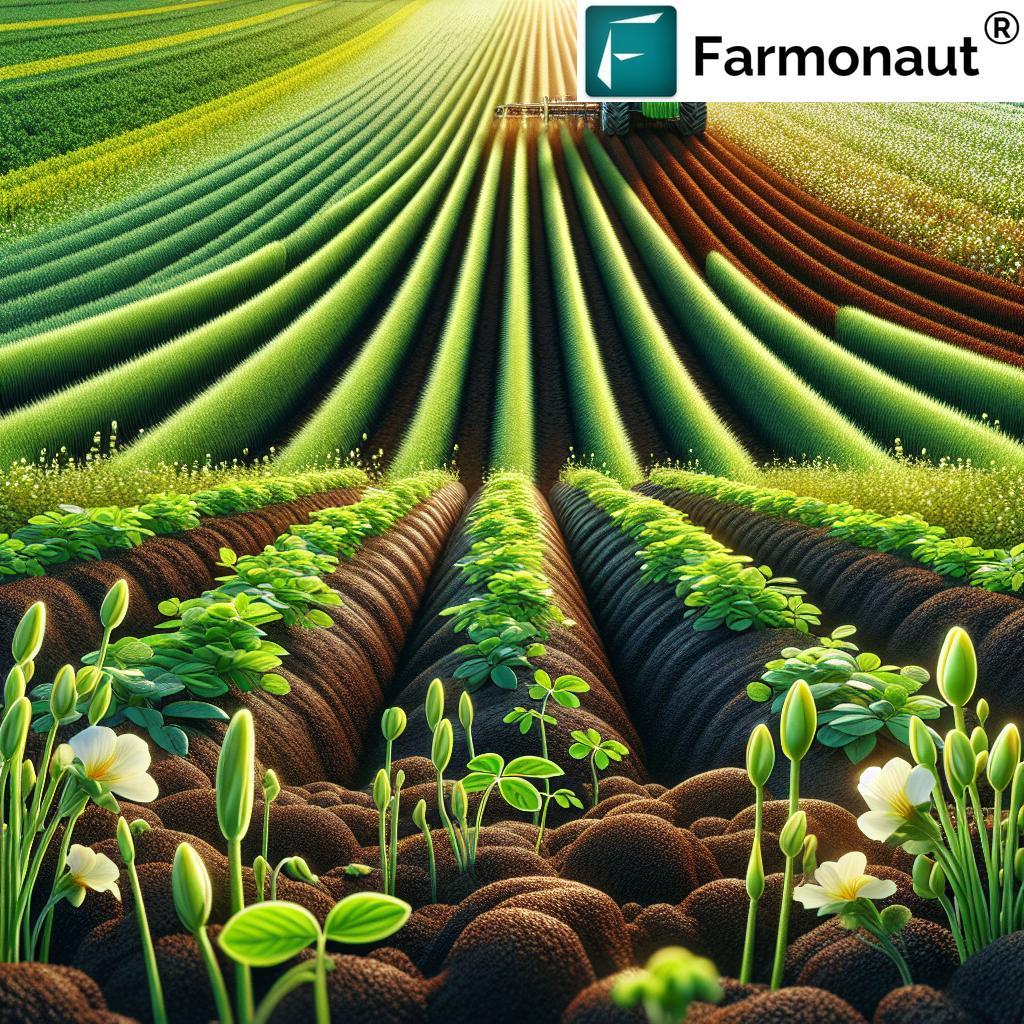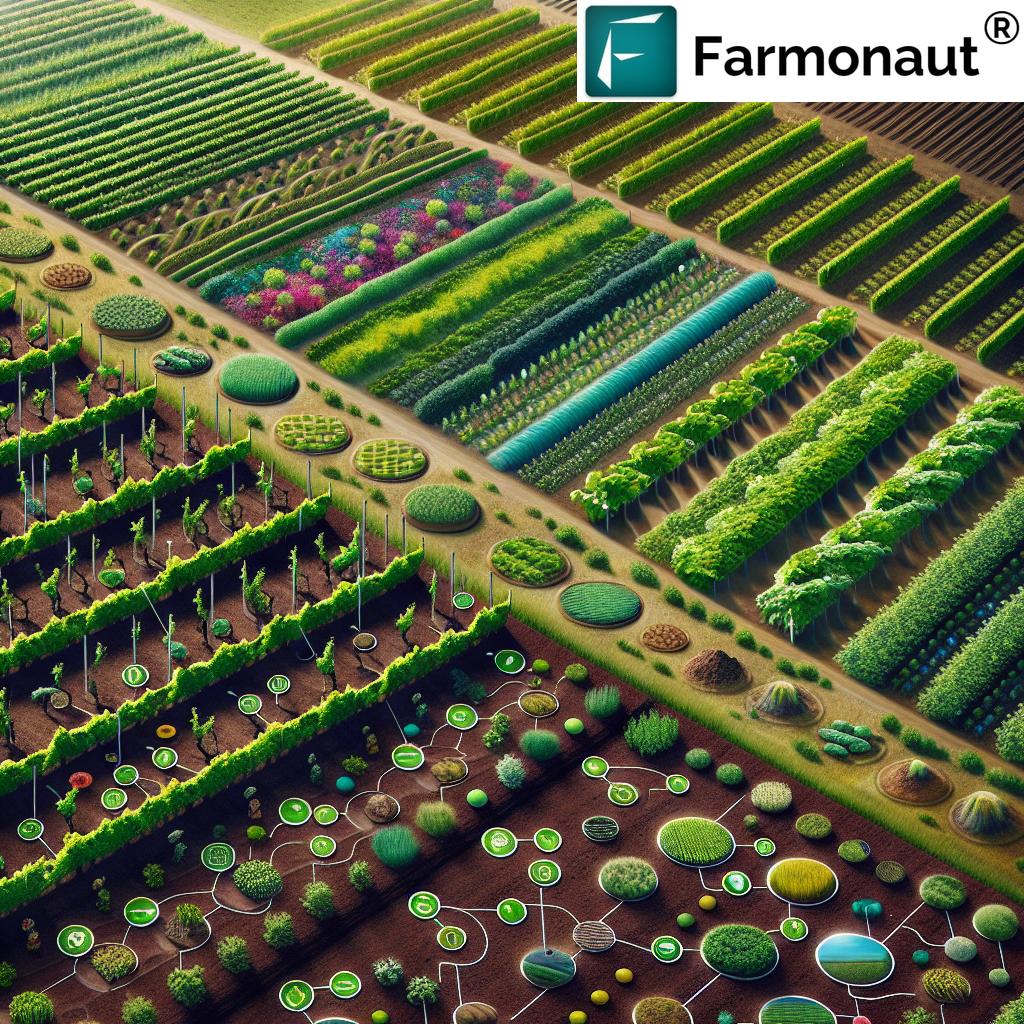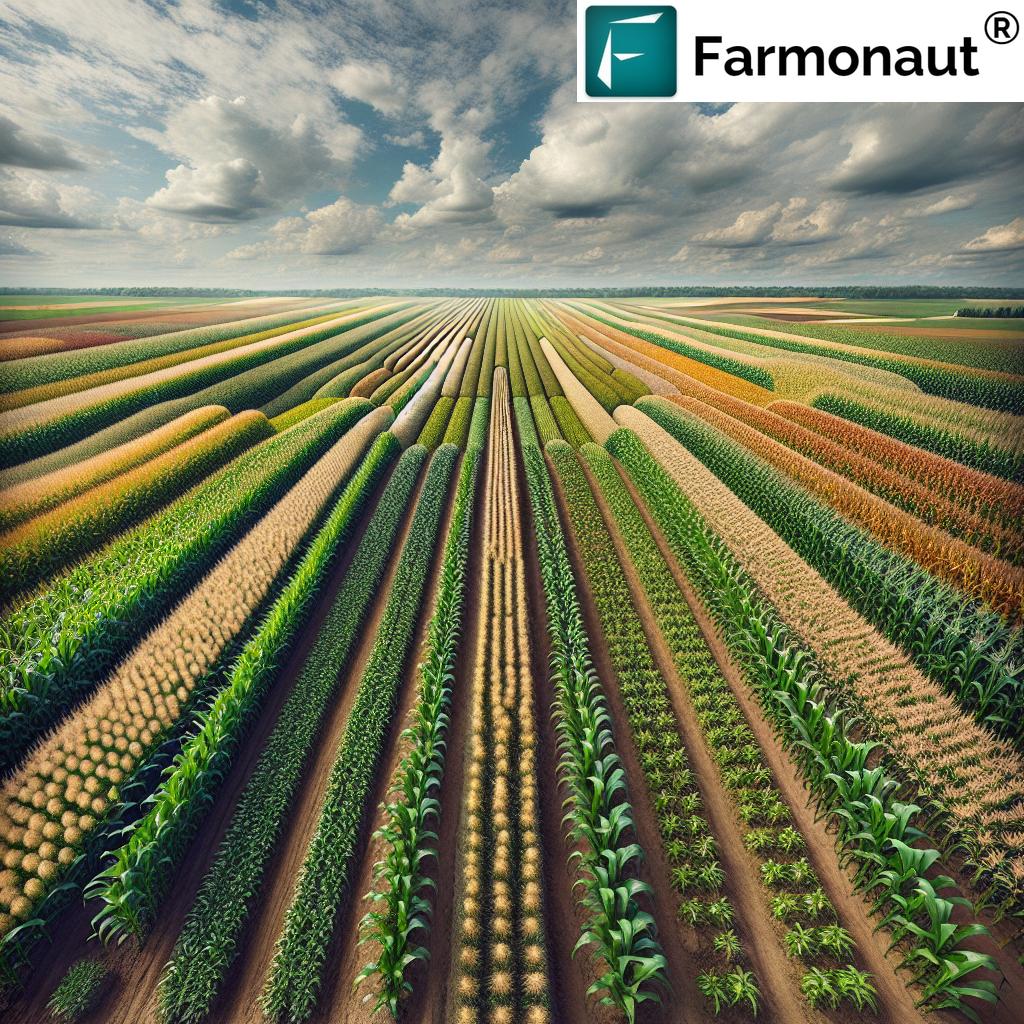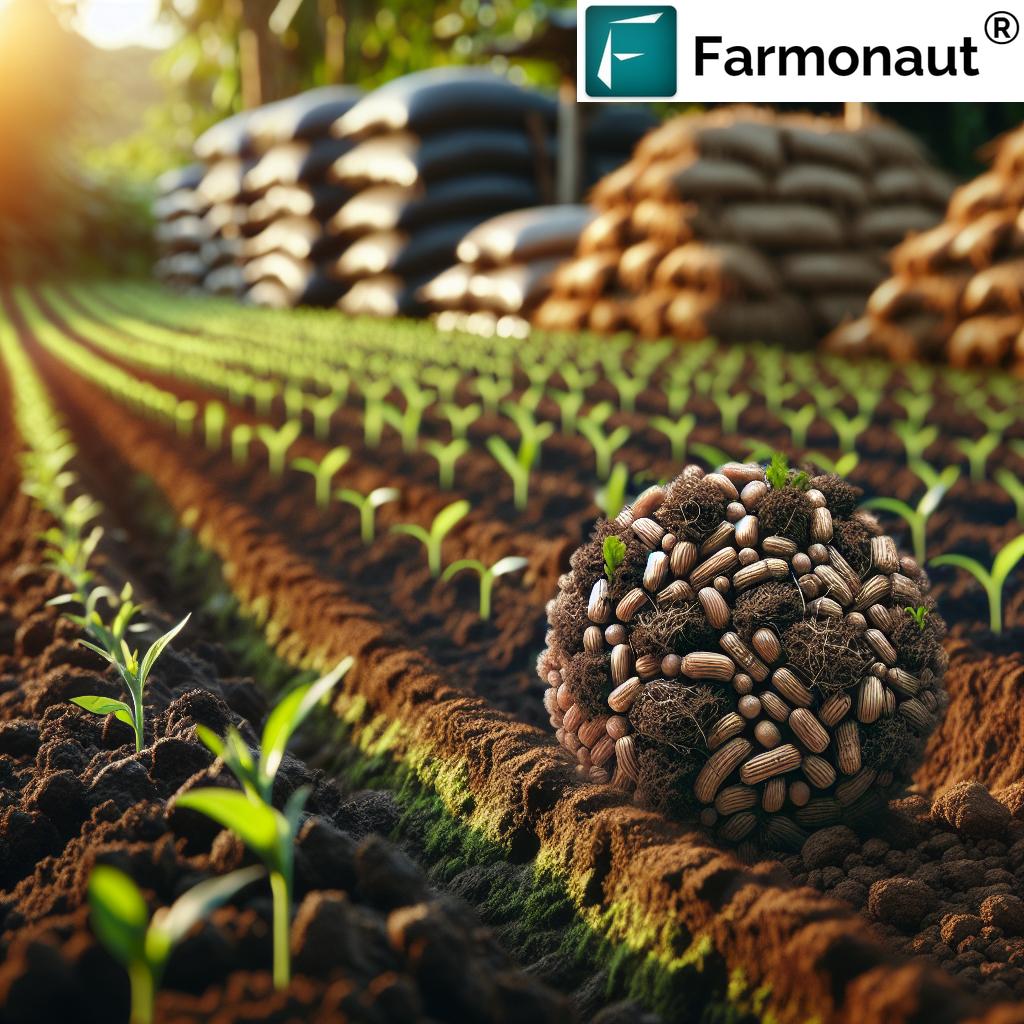Farming Stages 2025: Essential Innovations for Every Stage
- Introduction: The Importance of Understanding Farming Stages
- Overview of Key Farming Stages in 2025
- Land Preparation: Precision and Sustainability
- Seed Selection and Sowing: Biotechnology and Automation
- Crop Growth and Management: Smart Agriculture Technologies
- Pest and Disease Control: Integrated, Automated Responses
- Harvesting: Automation, Robotics, and Timely Operations
- Post-Harvest Handling and Storage in 2025
- Marketing and Distribution: Digital and Transparent
- How Farmonaut Empowers Farmers Across the Agriculture Stages
- Farming Stages and Innovations Overview Table
- Frequently Asked Questions
- Conclusion: Adapting to the Future of Farming Stages
“Over 70% of farms worldwide are expected to adopt precision agriculture technologies by 2025 for improved efficiency.”
Introduction: The Importance of Understanding Farming Stages
Farming is a fundamental practice that sustains human life by producing food, fiber, and raw materials. As we steer into 2025, understanding the farming stages is more crucial than ever. Modern farming is no longer just about growing crops but has become an integrated process, combining traditional knowledge with contemporary innovations in technology and management.
In today’s agriculture, each stage in farming—from land preparation to post-harvesting management—demands specific techniques, tools, and insights. With increased awareness of environmental impact and the challenges posed by climate change, the adoption of sustainable practices, smart resource usage, and optimal yield strategies has become non-negotiable. Let us explore how the stages in agriculture are evolving with technological advancements in 2025, and how these changes empower farmers to make informed, precise decisions for better productivity and sustainability.
Farmonaut is dedicated to empowering the global farming community with affordable, satellite-based farm management solutions. By integrating advanced technology into every agriculture stage, we help farmers achieve optimal yields and sustainable outcomes.
Overview of Key Farming Stages in 2025
The farming stages that transform raw land into productive agricultural output are more complex and integrated than ever. In 2025, agriculture stages generally include:
- Land Preparation: Involves clearing, tilling, and conditioning soil.
- Seed Selection and Sowing: Selecting and planting optimal seeds.
- Crop Growth and Management: Facilitating healthy crop growth using targeted interventions.
- Pest and Disease Control: Integrated approaches to protect crops and soil health.
- Harvesting: Collecting crops at the optimal moment.
- Post-Harvest Handling and Storage: Safeguarding quality until market delivery.
- Marketing and Distribution: Leveraging digital tools for transparent and efficient supply chains.
Let’s delve into each stage in farming and explore their modernization for 2025 and beyond.
Land Preparation: Precision and Sustainability
The first stage in farming is the thorough preparation of the land. Traditionally, this phase involved clearing vegetation, tilling soil, and conditioning for ideal crop establishment. In 2025, precision farming tools are increasingly utilized to analyze soil health, moisture levels, and nutrient content using advanced drones, satellite imagery, and sensor technology.
- Drones and Satellite Imagery: Offering highly detailed field mapping and soil condition monitoring, drones and satellites assist in detecting uneven moisture levels, nutrient deficiencies, and potential erosion zones.
- AI-Driven Soil Analytics: Machine learning algorithms process large datasets, helping farmers make evidence-based decisions on tillage methods, fertilizer application, and crop suitability.
- Conservation Tillage: This method reduces soil erosion, preserves organic matter, and contributes to sustainable soil management by minimizing disruption and supporting healthy soil microbiomes.
The adoption of sustainable land preparation practices not only benefits the environment but also lays the groundwork for enhanced yields.
Farmonaut’s satellite-based crop monitoring—accessible via web, Android, and iOS—empowers farmers at this farming stage to optimize their soil preparation using real-time actionable data. Such insights are critical for avoiding over-tillage, maintaining organic matter, and protecting soil biodiversity for the next planting stage.
Detailed crop and soil analytics help farmers make more sustainable and profitable decisions from the very beginning of the agricultural cycle.
Seed Selection and Sowing: Biotechnology and Automation
The next critical stage in farming is seed selection and sowing. The quality of seed chosen, its genetic attributes, and the method of sowing have direct impacts on crop yields and resilience throughout the season.
- Biotechnologically Improved Varieties: Advances in biotechnology have produced seeds with enhanced resistance to pests, diseases, and climatic stresses. These improved varieties ensure more consistent germination rates and robust growth throughout farming stages.
- Seed Treatment Technologies: Modern seed treatment involves coating seeds with protective substances to reduce early-stage diseases and enhance initial growth.
- Automated Seed Placement: Automated seed drills—sometimes AI-assisted—allow for uniform depth and spacing, which maximizes planting density and yield.
Accurately mapping field conditions and then pairing the right seed variety to each micro-plot ensures better adaptation to climatic conditions and reduces the likelihood of crop failure.
With satellite data from Farmonaut, farmers gain precision insights into soil health and nutrient levels, improving seed selection and timing. We make it easier to choose genetically improved varieties and deploy automated sowing methods for optimal establishment and future yields.
To further improve sustainability during these farming stages, Farmonaut’s Carbon Footprinting Solution helps producers monitor and continually reduce carbon emissions from field operations—promoting environmentally-friendly farming and valuable insights for global supply chains.
Crop Growth and Management: Smart Agriculture Technologies
The farming stage dedicated to crop growth and management is vital for maximizing yields and ensuring plant health. Traditionally, this phase required keen observation and well-timed manual interventions. In 2025, smart technologies offer digital transformation of agricultural management practices:
- IoT Sensors: Ground-based and aerial sensors provide data on soil moisture, temperature, plant health, and environmental changes, all in real-time.
- AI-Driven Crop Analytics: Artificial Intelligence platforms process massive data flows—generated by satellites, sensors, and weather systems—for predictive insights on resource needs and crop stress signals.
- Automated Irrigation and Fertilization: Smart systems reduce water and fertilizer wastage by distributing resources only when and where crops need them, improving both efficiency and environmental outcomes.
- Agroforestry Practices: Integrating trees and shrubs into cropping systems preserves soil structure, promotes biodiversity, and enhances carbon sequestration—helpful for combating climate challenges.
By adopting integrated management technologies, farmers can monitor plant vigor, predict resource needs, and intervene with precision—turning every agriculture stage into an opportunity for better yields and lower resource consumption.
Farmonaut’s Jeevn AI Advisory System exemplifies the potential of AI in 2025. By integrating real-time satellite and ground data, our platform delivers actionable advice on irrigation, fertilization, and pest threats directly to farmers’ devices, increasing the precision and efficacy of crop management.
- For more on how our technology guides forest plantation, large field, and crop advisory, visit: Farmonaut’s Advisory App
- See how precision fleet management makes large-scale operations seamless: Fleet Management Solution
“In 2025, sustainable farming practices could boost crop yields by up to 25% compared to traditional methods.”
Pest and Disease Control: Integrated, Automated Responses
Controlling pests and diseases is a crucial, ongoing effort during every crop growth stage. 2025 emphasizes Integrated Pest Management (IPM)—a multi-pronged approach leveraging biological control agents, resistant crop varieties, timely digital surveillance, and informed chemical interventions.
- Biological Control: Implementing beneficial insects, fungi, or bacteria to target and suppress pest populations naturally.
- Cultural Practices: Crop rotation, intercropping, and soil health optimization reduce vulnerability to both pests and diseases.
- Digital Pest Monitoring: Satellite and drone imagery detect hot-spots for timely interventions. AI models forecast outbreaks and recommend targeted actions.
- Sustainable Pesticide Use: Only when digital monitoring indicates thresholds have been exceeded, ensuring minimal environmental impact.
Farmonaut’s platform delivers precise, location-specific pest and disease alerts, empowering farmers to implement control strategies only when and where necessary—dramatically reducing chemical use and costs while protecting crop yields.
- For reliable traceability from farm to consumer—integral for chemical and disease audits—explore our solution: Blockchain-Based Product Traceability
Harvesting: Automation, Robotics, and Timely Operations
The harvesting stage marks the transformation of field labor into tangible food, fiber, or material output. The timing and method of harvesting are crucial for preserving crop quality and optimizing yield.
- Automated Harvesters and Pickers: Self-driving combine harvesters, robot-assisted fruit and vegetable pickers, and sensor-enabled threshers all improve speed, efficiency, and reduce losses at harvest.
- AI Timing Optimization: Data-driven models determine the perfect window for harvesting, avoiding over-ripening or underdevelopment.
- Reduced Manual Labor: Especially valuable in regions with workforce shortages or escalating labor costs.
By leveraging advanced analytics, farmers can plan harvesting activities to coincide with ideal market conditions, maximizing profits while minimizing spoilage.
Farmonaut’s crop health monitoring and satellite alerts support precise harvest decisions, warning farmers of early-maturing patches or oncoming weather challenges during critical harvesting windows.
Post-Harvest Handling and Storage in 2025
After the crops have been harvested, the journey isn’t over. Post-harvest management—including cleaning, sorting, drying, storage, and processing—is essential for preserving crop quality and maximizing value.
- Smart Storage Solutions: Hermetic, sensor-controlled silos and grain bins adjust conditions to prevent spoilage and post-harvest loss.
- Cold Chain Logistics: Modern transportation and storage tools maintain freshness for perishable items, expanding access to distant markets and reducing food waste.
- Value-Added Processing: On-site or local processing units convert raw harvest into higher-value products, increasing farm income.
- Quality Assurance Technologies: Automated digital sorters use vision systems to grade produce for quality and safety.
Smart processing and storage isn’t just about technology; it’s about protecting the farmer’s hard work, ensuring that optimal yields translate into stable profit long after harvest.
Our resource management tools at Farmonaut help in tracking optimal storage levels, improving farm-to-market logistics, and connecting food processors with trusted farmers via our API.
- To view technical documentation and start integrating with Farmonaut: API Developer Docs
Marketing and Distribution: Digital and Transparent
The final stage in farming involves getting crops to consumers efficiently, safely, and profitably. In 2025, the agricultural marketing and distribution network is transformed by digital platforms and blockchain:
- Blockchain-Based Track-and-Trace: Ensures transparency of every agriculture stage from production to consumption, supporting fair prices, food safety, and minimal fraud.
- Digital Marketplaces: Link farmers directly with buyers, bypassing unnecessary intermediaries and improving margins.
- Automated Logistics Management: AI-driven systems manage distribution fleets, optimizing route planning and reducing spoilage in transit.
Farmonaut goes a step further with blockchain-enabled traceability—see our Traceability Solution—supporting both farmer livelihoods and consumer confidence across all farming stages.
For large plantation and agribusiness management, our enterprise-grade dashboard—Agro-Admin App—offers a full suite for monitoring, reporting, and compliance at scale.
How Farmonaut Empowers Farmers Across the Agriculture Stages
We at Farmonaut believe that innovation should be practical, affordable, and accessible to every farmer—regardless of field size. Our satellite-based crop health monitoring, blockchain traceability, AI-driven advisories, and resource management tools transform every farming stage:
- Pre-planting and Land Preparation: Multispectral satellite data reveals real-time soil health and enables informed tillage and input planning.
- Sowing: Alerts on soil moisture, weather, and field readiness power timely and efficient seed placement, crucial for maximizing germination rates.
- Growth Management: Ongoing in-field surveillance detects stress, pest outbreaks, or nutrition issues before they impact yield.
- Harvest Decisions: Early maturity signals maximize quality and reduce losses.
- Compliance & Traceability: Integrating traceability systems underpins buyer trust and opens global market access.
- Environmental Sustainability: Our carbon footprinting solution encourages lower emissions across all agricultural stages.
- Risk Reduction: Satellite-based verification supports crop loans and insurance, mitigating risk and strengthening access to finance.
Every service is designed for scalable access, whether by smallholders through mobile apps or by global agribusinesses integrating Farmonaut’s API.
Explore Farmonaut’s Satellite & Weather API
Ready to get started?
Farming Stages and Innovations Overview Table
The table below presents an at-a-glance comparison of each core farming stage alongside the technology innovations anticipated or emerging in 2025, focusing on enhancements in yield, sustainability, and adoption level worldwide. All estimates are based on global trends as of 2025.
| Farming Stage | Core 2025 Innovation | Estimated Yield Improvement (%) | Sustainability Benefit | Adoption Level in 2025 (%) |
|---|---|---|---|---|
| Land Preparation | Satellite-Guided Soil Analysis, Conservation Tillage | +8 – 12% | Reduced erosion, preserved organic matter | ~74% |
| Seed Selection & Sowing | AI-Advised Seed Selection, Automated Sowing Drills | +10 – 15% | Minimized waste, climate-adapted varieties | ~65% |
| Crop Growth & Management | IoT Sensors, AI Analytics, Smart Irrigation | +12 – 20% | Lower inputs, higher resilience | ~68% |
| Pest & Disease Control | Digital Pest Monitoring, Integrated Management | +5 – 9% | Minimized chemical use, biodiversity support | ~60% |
| Harvesting | Automated Harvesters, AI Maturity Prediction | +6 – 10% | Reduced labor, lower post-harvest loss | ~58% |
| Post-Harvest Handling & Storage | Sensors, Smart Storage, Digital Sorting | +8 – 13% | Reduced spoilage, energy savings | ~55% |
| Marketing & Distribution | Blockchain Traceability, Digital Platforms | +5 – 7% | Transparency, equitable pricing | ~50% |
Frequently Asked Questions
-
What are the main farming stages in 2025?
The key farming stages are land preparation, seed selection and sowing, crop growth and management, pest and disease control, harvesting, post-harvest handling and storage, and marketing plus distribution. Each is increasingly supported by digital tools, automation, and data-driven practices. -
How does technology improve sustainability across farming stages?
Cutting-edge technologies enable precise inputs, efficient resource use, minimal waste, and better adaptation to environmental changes—leading to both higher yields and lower impact on ecosystems. -
Can smallholder farmers benefit from advanced farming technologies?
Absolutely! Affordable, app-based solutions like Farmonaut level the playing field. Small farms can now access satellite, AI, and blockchain insights to optimize every agriculture stage, reduce costs, and boost output. -
What role do blockchain and APIs play in farming?
Blockchain ensures traceability and supply chain transparency, supporting safety and fair pricing. APIs allow seamless integration of farm data into broader business and logistics systems, scaling benefits across agricultural supply networks. -
How does Farmonaut differ from traditional farm management solutions?
Farmonaut uses satellite and AI—no costly local hardware required—offering global, scalable, and cost-efficient solutions for all sizes of farms, across all farming stages. -
How can I access Farmonaut’s technologies for my farm?
Access our web, Android, and iOS apps for instant analytics and advisories, or explore our technical integration options via API. Subscription options are available for users of all scales (see above).
Conclusion: Adapting to the Future of Farming Stages
With the farming stages of 2025 rapidly evolving, agriculture has become a science of precision, sustainability, and innovation. The various stages in farming now encompass everything from detailed soil preparation and seed selection to integrated pest management, automated harvesting, and digital supply chain tracking.
Empowering farmers at every step, from land preparation to marketing, hinges on the meaningful integration of technology and data-driven insights. With the right approach, stages in agriculture can be optimized for higher productivity, environmental stewardship, and profitability. As we progress into 2025 and beyond, innovations in harvesting, pest control, storage, and distribution will continue to transform both small and large-scale farming, contributing to food security and a more sustainable world.
For every stakeholder in agriculture—from the farmer tilling the land to the consumer at the table—understanding, integrating, and constantly improving the farming stages will be the foundation of continued progress and prosperity.






